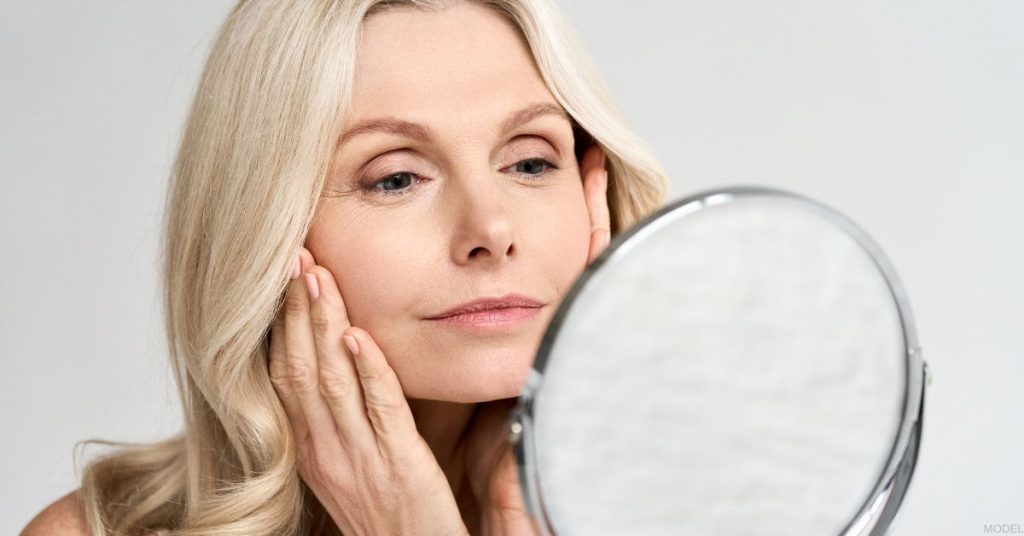The Gill Center for Plastic Surgery & Dermatology
121 Vision Park Boulevard, Suite 100
Shenandoah, TX 77384
Phone: (281) 853-5308
Mon-Thurs: 8 a.m. – 4:30 p.m.
Friday: 8 a.m. – 2 p.m.
Dysport® vs BOTOX®: 4 Differences For Our Patients In The Woodlands To Consider (Updated 2025)

When the FDA initially approved BOTOX in 2002 to minimize the dreaded “11s”—the vertical frown lines that develop between the eyes—it quickly became the go-to anti-wrinkle treatment in plastic surgery practices worldwide. When Dysport emerged in 2009 to challenge BOTOX’s dominance, patients wanted to know if one was better.
The short answer is not really, although a few differences might make one a better option for our patients in The Woodlands, Spring, Conroe, and throughout Texas, based on specific preferences and lifestyle factors. With this in mind, we break down Dysport vs. BOTOX below.
What Is BOTOX?
BOTOX and Dysport are neurotoxins that block muscle contractions, relaxing the muscles under your skin. It’s a noninvasive way to treat forehead lines, crow’s feet, and glabellar lines (those vertical lines between your eyebrows). Treatments typically take only a few minutes, and you can resume your normal activities after your appointment.
What Is Dysport?
Dysport is a BOTOX alternative with the same primary active ingredient as BOTOX but is formulated with a different protein, resulting in Dysport spreading further from the injection site. That’s why it’s often used for more extensive treatment areas, such as the forehead.
Now that you understand the basics of these two products, here are 4 important points of comparison:
#1. Dosage: How Many Units of BOTOX or Dysport Will You Need?
BOTOX is a more concentrated product, while Dysport is more diffuse. As mentioned above, Dysport is often preferred for larger treatment areas as the product can spread further, faster from the injection site. However, because of Dysport’s thinner formula, it does require more product to achieve the same results.
#2. Time To Results: How Long Until BOTOX and Dysport Results Are Visible?
Dysport is a quick-spreading, fast-acting neurotoxin. While most BOTOX patients need up to a week to see their results, patients who choose Dysport can usually see a difference within the first 24 to 48 hours.
#3. Longevity: How Long Do BOTOX and Dysport Last?
Both products last around 3 months each and require periodic touch-ups to maintain your results. Most patients will need fewer units of product to preserve their youthful look if they get their maintenance treatment before their original injection has fully been metabolized.
#4. Safety: Are BOTOX and Dysport Safe?
Both injectables have established track records of safety that go back more than a decade. Both have also proven effective when you choose an expert injector. The best option depends on the treatment area and the severity of the lines and wrinkles.
In terms of side effects, you may experience:
- Slight pain
- Swelling
- Redness
- Bruising
- Drooping eyelids
These are typically minor and last for only a couple of days.
Which is Better For Your Lifestyle in The Woodlands?
We advise our local patients to consider the following when choosing between Dysport and BOTOX:
- Onset: With its faster onset, patients with an active social calendar often choose Dysport as their go-to neuromodulator, especially when preparing for a special event or weekend getaway.
- Spread: For larger treatment areas, Dysport diffuses more easily, making it a better choice. BOTOX works best for precise targeting of smaller treatment areas.
- Predictability: Busy professionals who prioritize precise dosing and predictable results often favor the consistency and reliability of “lunchtime” BOTOX treatments.
- Age: Many patients in The Woodlands begin exploring preventative treatments as early as their late 20s and 30s to delay deeper wrinkles. Dysport often appeals to younger patients due to its ease of spread and natural-looking results.
Whether you’re looking to enhance your look before a special event or maintain your youthful glow, our team will help you determine the best option for your needs, goals, and lifestyle.
Which Treatment Is Right for You?
If you’re new to neurotoxin injections, consulting with an experienced, qualified injector is essential when deciding between Dysport and BOTOX. You can discuss your options at The Gill Center by using the online form to request a consultation or by calling us at our practice in The Woodlands, TX, at (281) 853-5308.
This blog post was originally published in February 2024 and updated in May 2025.
Tagged with: botox results • botox vs dysport • BOTOX® • dysport • dysport results
* All information subject to change. Images may contain models. Individual results are not guaranteed and may vary.






Leave a Reply